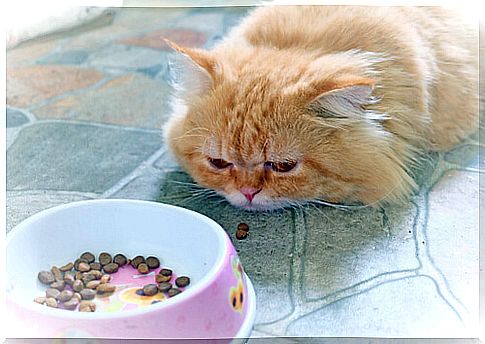8 Facts About Antibiotics For Cats

Antibiotic treatment for cats is indicated in cases of infection. Bacterial infections in cats can be established through open wounds, by contagion with something they ingest, or simply by being present in their environment.
Bacteria are unicellular organisms – single-celled – and therefore are microscopic. Bacteria inhabit every environment on planet earth, including the inside and outside of your own body and that of your cat.
The vast majority of bacteria are harmless to health. However, there is a group of bacteria that are the causative agents of various infectious diseases.
Among infectious diseases we can mention gastroenteritis, pneumonia, skin infections, urinary tract problems, among others.
How do antibiotics work?
Depending on its chemical nature, an antibiotic can have different mechanisms of action.
- If it inhibits the reproduction of the bacterial population, it is said to be “bacteriostatic.” This is the case if, for example, you prevent bacteria from building their cell walls.
- If the drug blocks an important function for the bacteria to live, it is said to be “bactericidal.” This is the case if, for example, you block a cellular pathway to harness its energy sources.
What is antibiotic resistance?
You may have noticed that antibiotics for cats are not available for pet guardians to purchase without a prescription. This is because for the past few decades, the medical community has feared antibiotic resistance.

Simply put, not all bacteria will be killed by taking antibiotics. Therefore, any remaining bacteria that are able to evade antibiotics have the potential to change (genetically) to protect themselves from the drug, that is, they become “resistant.”
As these resistant bacteria change and reproduce, they pass these genes on to the next generation of bacteria. Then, as the end result, resistant bacterial populations emerge, which are no longer affected by antibiotics.
What are commonly used cat antibiotics?
Some commonly used bactericidal antibiotics in cats include beta-lactams – derived from penicillin – and metronidazole. These types of antibiotics are often used to treat the following infections in cats:
- Derivatives of penicillin: of this group, Amoxicillin is the most widely used antibiotic in human and veterinary medicine. It is given to cats suffering from ear infections, urinary infections, and upper respiratory infections. Also in wounds, abscesses and bites.
- Metronidazole: It can be commonly used to treat protozoan infections like Giardia and Trichomonas and also an inflammatory bowel disease in cats and dogs.
- Gentamicin: respiratory infections, pneumonia, ear infections, and more.
- Azithromycin – Has been used to treat Lyme disease in cats, streptococcal infections, chlamydia, and staph infections.
- Oxytetracycline: infections caused by protozoa, sinus infections, as well as feline infectious anemia.
- Doxycycline: This is a broad-spectrum antibiotic that has been used to treat conditions, such as periodontal disease in cats and dogs, and those caused by Toxoplasma gondii and Chlamydia felis.
Proper dosage
The veterinarian will need to weigh and examine the pet to prescribe the proper dosage. Factors that determine dosage include the animal’s weight, symptoms, general medical condition, and any other medications it may be taking.
It is important to supply the doses, during the indicated time. Even if the cat appears healthy, you should continue with the full treatment. This will reduce the chances of the infection recurring and help your cat stay in perfect health.
If you accidentally miss a dose of antibiotics, administer the missed dose as soon as you remember. This unless you remember it almost at the time of the next scheduled dose. In that case, don’t give your cat two doses at the same time.
Possible side effects of using antibiotics in cats
All medications can cause unpleasant side effects.
- Common side effects of amoxicillin and ampicillin include: Upset stomach, vomiting, diarrhea, excessive salivation.
- The side effects of tetracycline in cats is mainly nausea and diarrhea. Also others such as difficulty swallowing, tooth discoloration, sensitivity to the sun, delayed growth and healing of bones, liver or kidney damage.

Antibiotic treatments for cats
There are several antibiotic treatments that you should avoid, including:
- Topical antibiotics: Topical antibiotic ointments such as neosporin or bacitracin – commonly used in humans – have been reported to be highly dangerous. A cat that licks ointment from a wound can ingest enough to cause serious illness or even death.
- Fluoroquinolones: May cause seizures in cats, according to the ASPCA Animal Poison Control Center. These broad-spectrum synthetic antibacterial drugs are marketed under brand names such as Baytril, Cipro, and Levaquin.
The Merck Veterinary Manual notes that, in cats, the adverse effects of this class of drugs, especially enrofloxacin – marketed as Baytril – includes acute retinal degeneration, which can lead to blindness.
Keep in mind that to prescribe the most appropriate antibiotics for cats, your veterinarian will need to perform a complete physical exam. Also, some vets may consider doing a culture and sensitivity test to see what type of bacteria may be present in a certain infection.








